Submitted by WA Contents
Four interconnected roof pyramids form Datong Art Museum designed by Foster + Partners in China
China Architecture News - Jan 07, 2022 - 14:06 4568 views
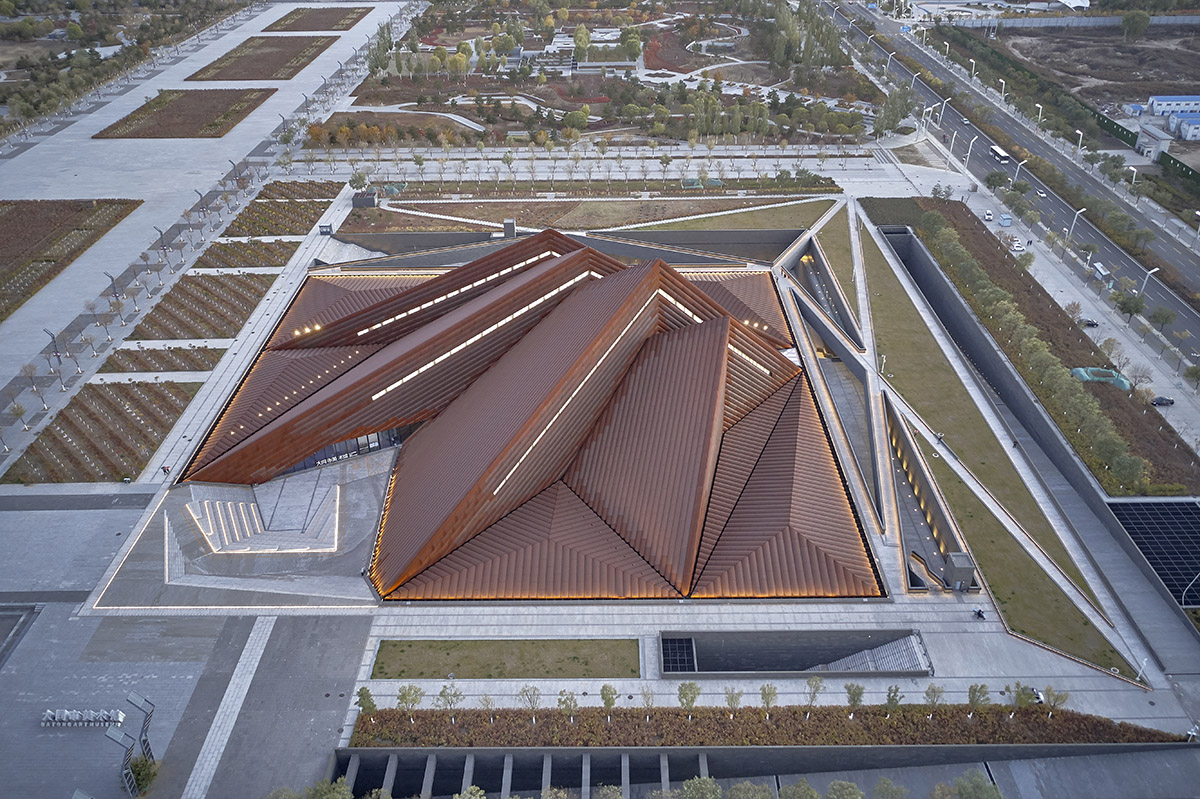
Four interconnected pyramids, clad in naturally oxidised curved steel plates, form the Datong Art Museum designed by Foster + Partners, which has currently been opened as a new cultural destination in Datong, China.
Named Datong Art Museum, the program of the building offers a series of spaces dedicated to education and learning, including a children’s gallery, media library, archive and art storage facilities.
The studio embeds all the gallery spaces underground, while the outer shape of the building is conceived as "a landscaped terrain with a series of interconnected pyramids emerging from below the earth."
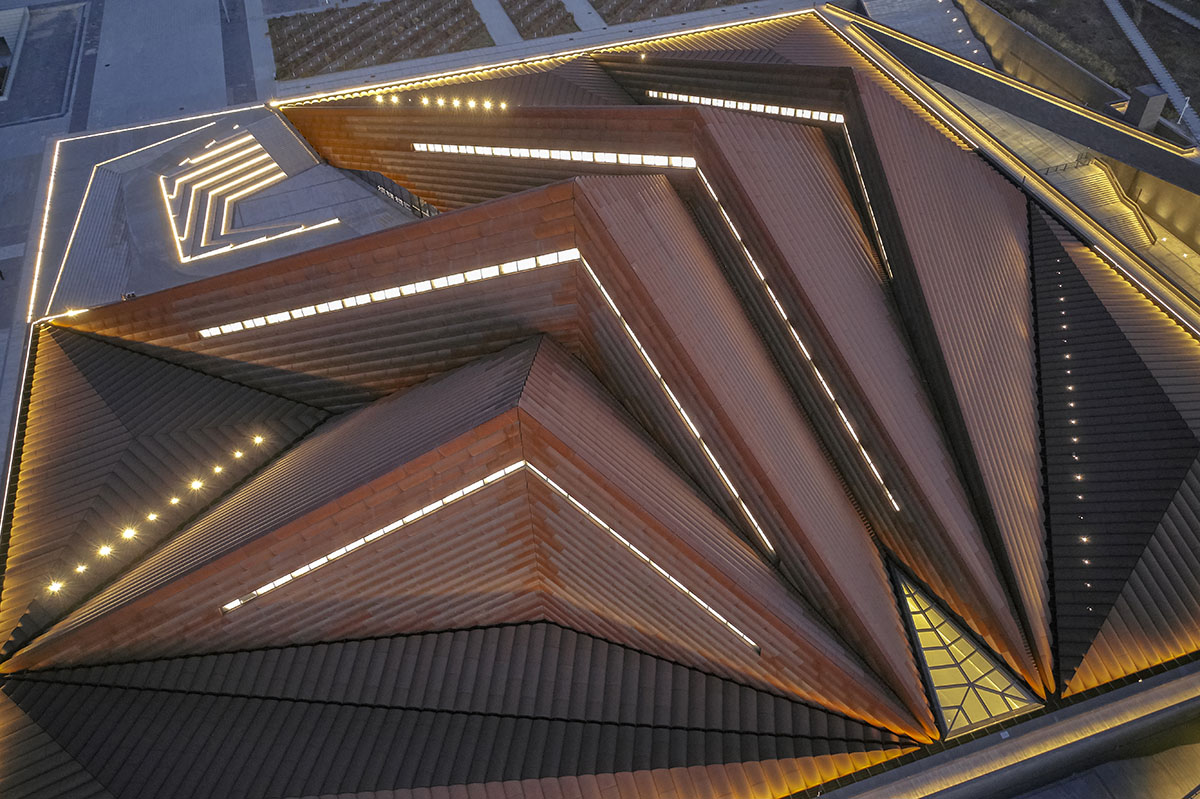
Aiming to create "as a social hub for people – an urban living room" as stated by Luke Fox, Head of Studio, Foster + Partners, the building's bold, sculptural appearance makes a statement from afar. The building arouses curiosity about what is inside.
Occupying a 32,000-square-metre area, the museum was completed as one of four major buildings within Datong New City’s cultural plaza, and Foster + Partners' museum is set to become a new hub for creative industries in the region for both artists and the public.
"The museum is conceived as a social hub for people – an 'urban living room' for Datong – that brings people, art and artists together in a space where they can interact," said Luke Fox, Head of Studio, Foster + Partners.
"At the heart of the museum, the Grand Gallery exemplifies this spirit with a generously scaled, flexible exhibition space designed to accommodate specially commissioned large-scale artworks as well as performance art and other events," Fox added.
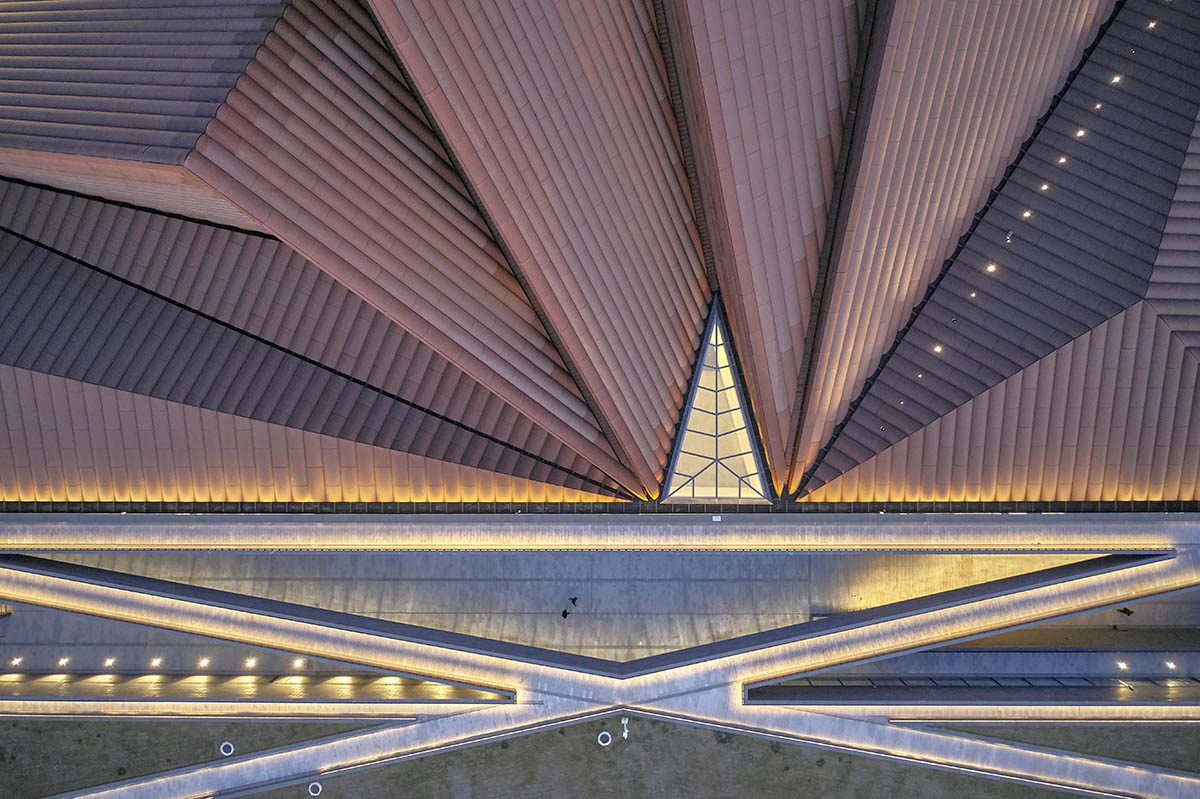
Upon entering, visitors are guided towards the museum by strong diagonal paths in the landscaping. Although the entrance to the building is difficult to perceive, the game created by the pyramids pushes the building to explore further.
The entrance is accessed via a winding sequence of ramps, which lead down into an open sunken plaza – this also provides an amphitheatre for outdoor performances.
Entering the building, visitors are met with a mezzanine level that opens up a spectacular overview of the Grand Gallery. The Grand Gallery is enhanced through the there dimensional of the pyramidal roofscape which is strongly felt inside. The height of the interior, reaching at 37 meters and spanning almost 80 meters, adds a certain depth.
The Grand Gallery acts as a social heart of the museum, with climate-controlled exhibition spaces placed around the perimeter of the museum on a single level, allowing for ease of access.
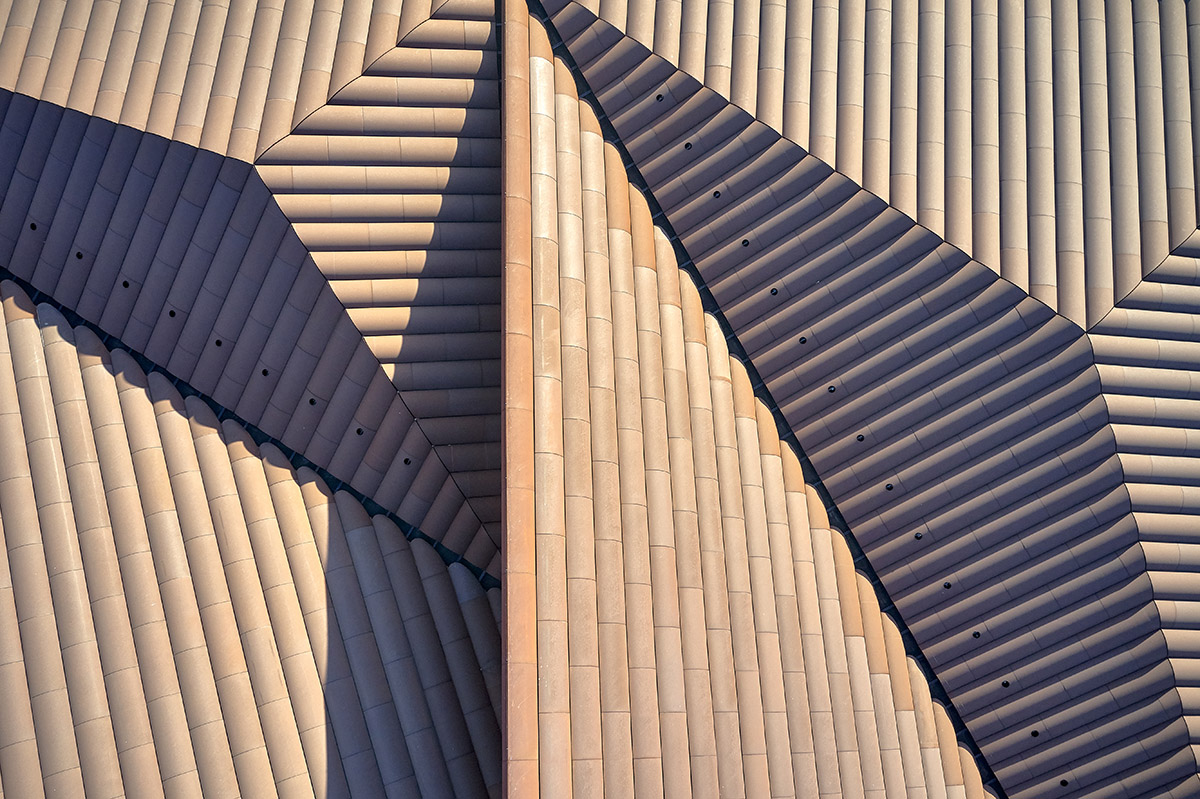
"A key aspect of the building is the focus on education and learning with a dedicated children’s gallery, filled with sunlight from tall, south-facing windows," said Foster + Partners.
"A smaller education centre and a media library complement the education programme and there are facilities to support artists residencies, talks and conferences."
The composition of the museum creates four interconnected roof pyramids that increase in height and fan outwards towards the four corners of the cultural plaza. Due to the roof lights placed at each peak of the pyramids of the museum, natural light floods into the interior.
Foster + Partners created this roof to provide a larger structural span in the building and aimed to design a vast, flexible column-free volume below, while mediating the smaller gallery spaces towards the edges.
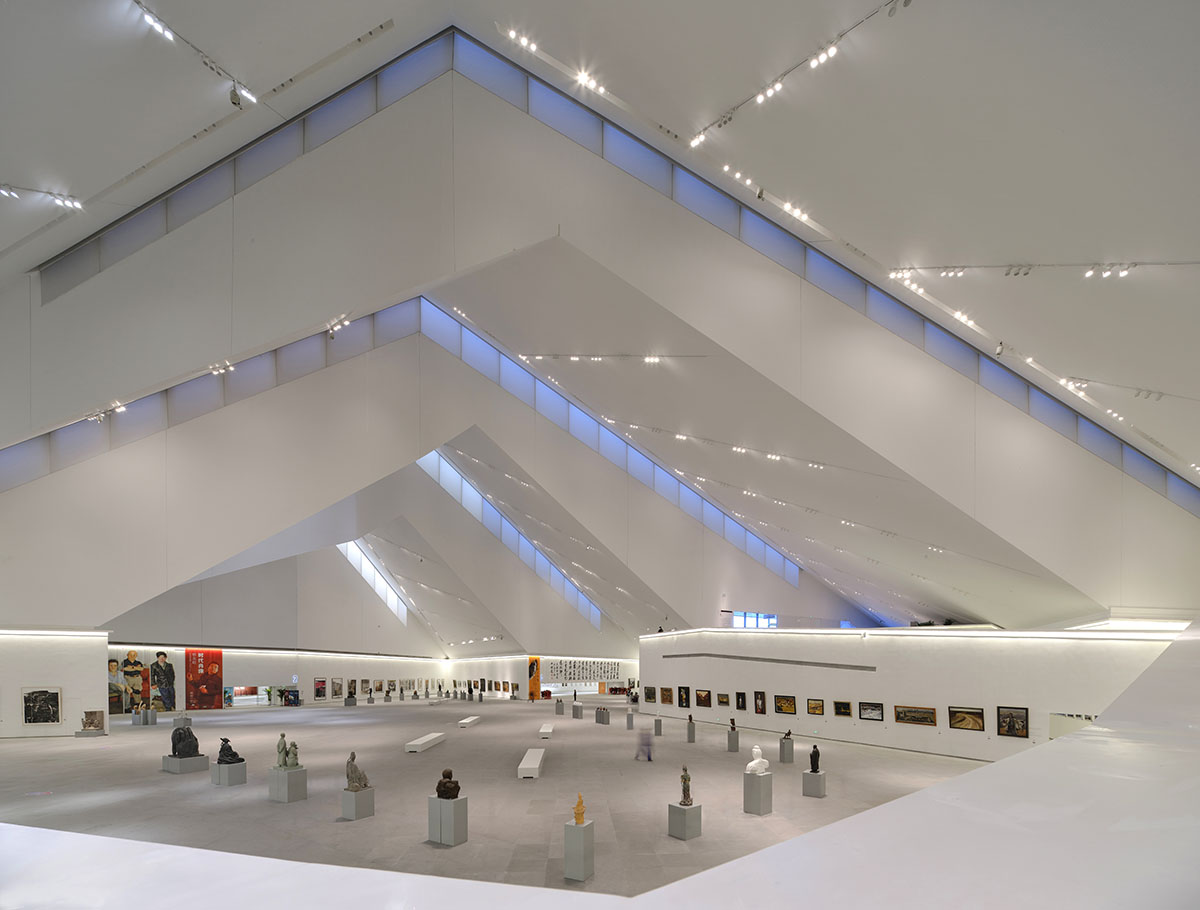
While the roof is clad in naturally oxidised curved steel plates, it also helps drain water and gives a rich, three-dimensional quality to the surface. The studio proportioned the panels to be able to suit the large scale of the museum and their linear arrangement accentuated the pyramidal roof form.
"By sinking the building into the new plaza, the design relates in scale to the neighbouring cultural buildings, balancing the overall composition of the district masterplan while maximising the internal volume," added the studio.
The design team placed a clerestory between each volume to create a naturally lit interior during the day, while creating a unique beacon for the new cultural quarter at night.

"Designed for the future, we hope the museum will become the centre of the city’s cultural life – a dynamic public destination," added Fox.
As Foster + Partners explains, the building’s efficient passive design strategy responds to Datong’s climate. While high-level skylights take advantage of the building’s north and north-west orientation, they also allow natural light to aid orientation while minimising solar gain and ensuring the optimum environment for the works of art.
Sinking the building into the ground along with a high-performance enclosure further reduces energy needs. The roof is mostly solid and is insulated to twice the building code requirements.

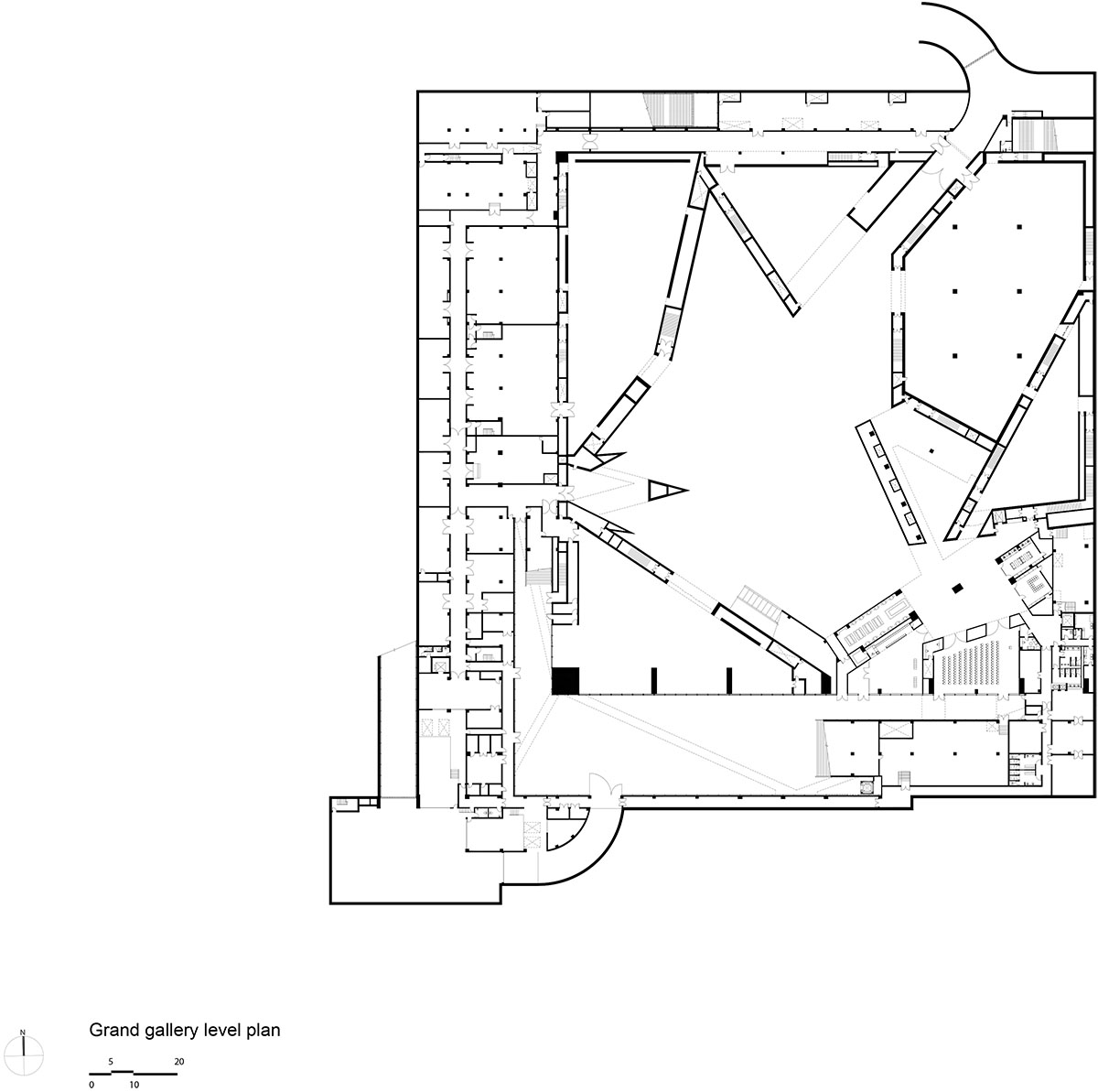
Ground gallery level plan
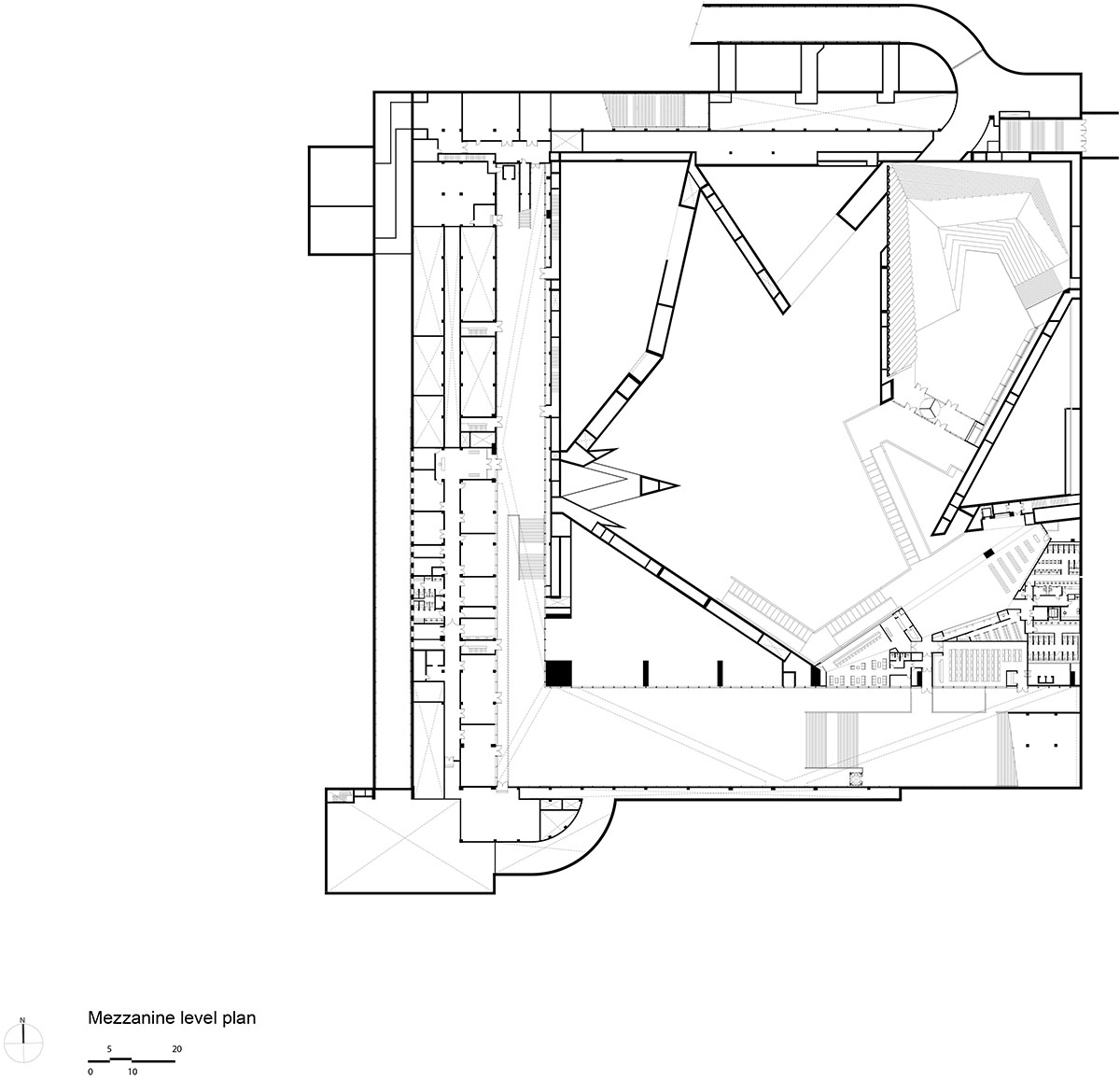
Mezzanine plan
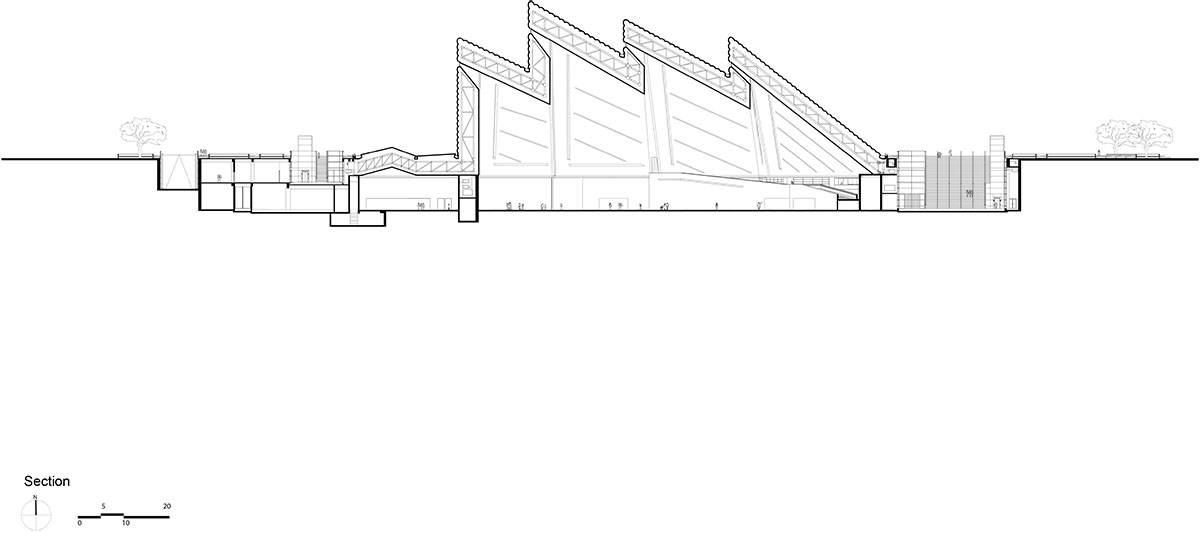
Section

East elevation

West elevation

South elevation

North elevation

Roof plan
Commissioned in 2011, Foster + Partners completed the project in 2021. Foster + Partners collaborated with China Architecture Design & Research Group and worked with AECOM for landscape design in the project.
Foster + Partners recently completed the Narbo Via Museum Of Roman Antiquities in France, and a new Apple Store with soaring volume in the United States.
Project facts
Project name: Foster + Partners
Architects: Foster + Partners
Location: Datong, China
Size: 32,238m²
Date: 2011
Completion date: 2021
Museography and Exhibition design: Lord Cultural Resources
Structural Engineer: China Architecture Design and Research Group
Landscape Architect: AECOM
Client: Datong Municipal Administration of Culture Broadcasting Television Press & Publication
Collaborating Architect: China Architecture Design & Research Group
Quantity Surveyor: China Architecture Design and Research Group
Lighting Engineer: Claude Engle Lighting, Tsinghua University
All images © Yang Chaoyin
All drawings © Foster + Partners
> via Foster + Partners
